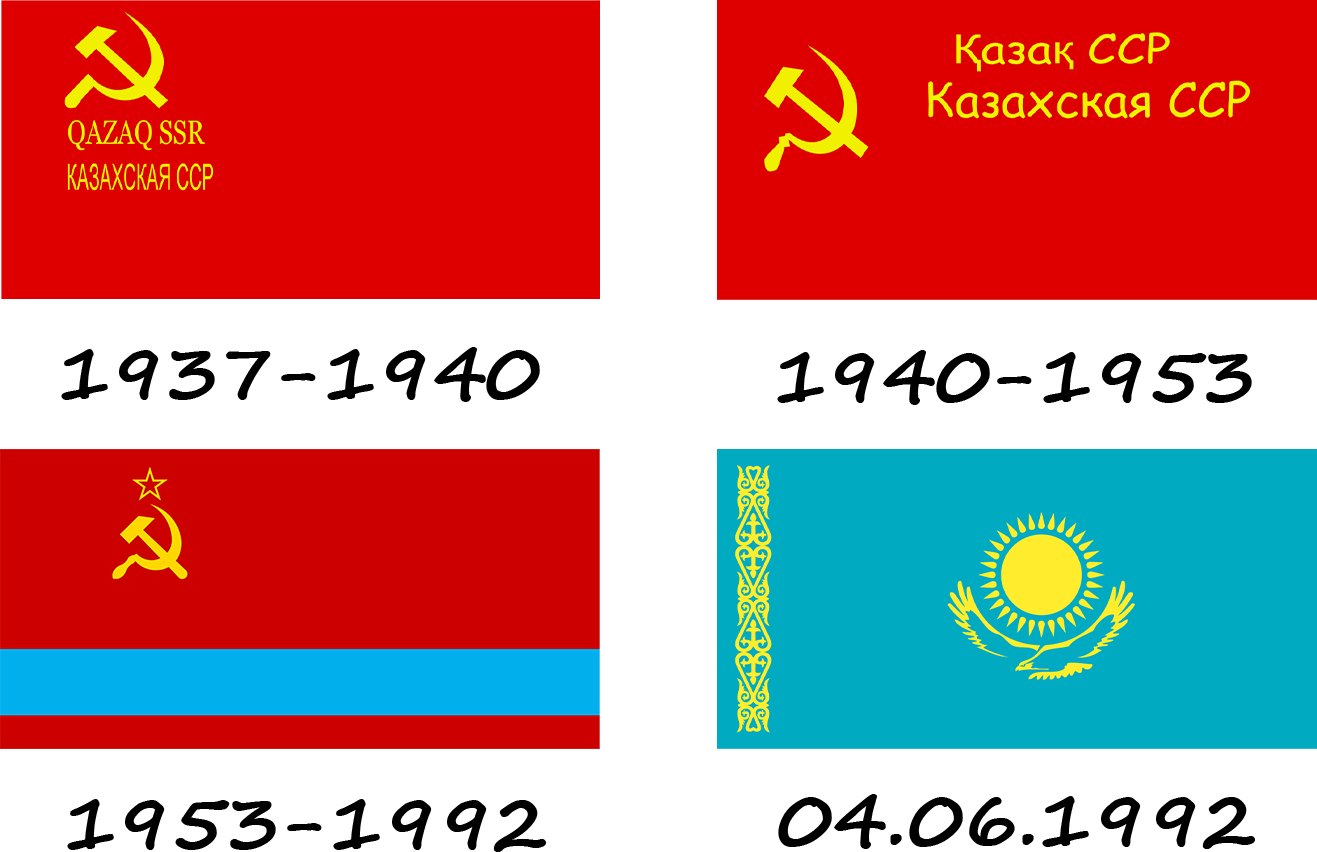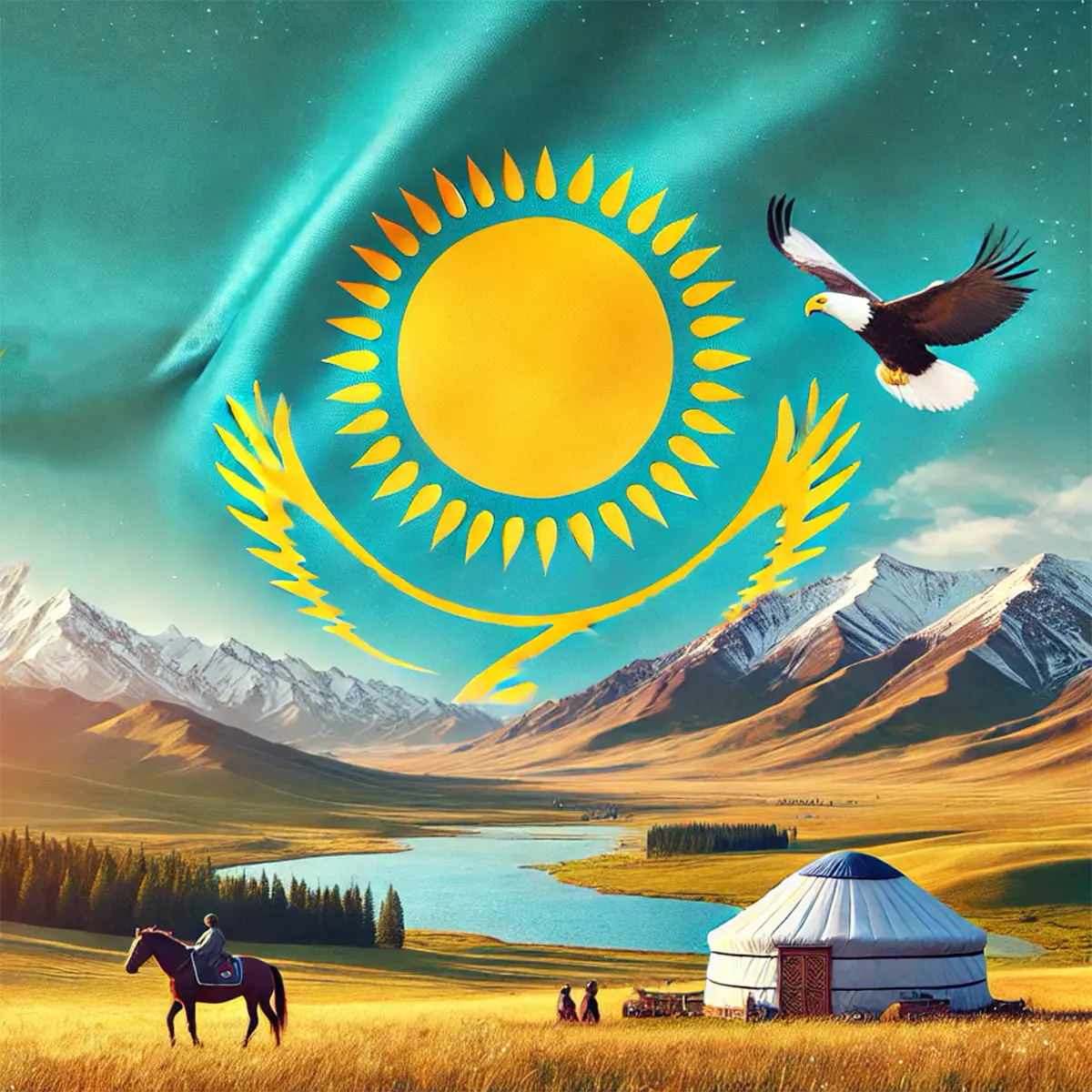The evolution of the flag of Kazakhstan reflects the historical changes in the country. During the Soviet period from 1937 to 1953, flags with a hammer and sickle on a red background were adopted. Between 1953 and 1992, however, elements unique to Kazakhstan gradually emerged, such as the light blue stripe, which hints at post-Soviet national identity.

In the 1990s, political events in the USSR destroyed the country's borders and opened the door to freedom. After the declaration of independence in 1991, the development of the state symbols of the Republic of Kazakhstan began. In early 1992, a competition for the design of the flag was announced. It was attended by many representatives of the creative industry, talented artists, composers and performers. In total, there were 600 people and 1200 projects submitted from Kazakhstan, Tatarstan, Turkey, Germany and Mongolia. Among them were dark blue designs depicting a house and the moon, a blue bear and three stripes, and stars. The chosen version with a sky-blue background, golden sun, eagle and national ornament marked a radical shift from the previous designs. These changes symbolized Kazakhstan's independence and the search for a unique identity distinct from its past under the Russian Empire and the Soviet Union. The current flag represents the traditions and sovereign ambitions of Kazakhstan.
The national flag of independent Kazakhstan was officially adopted in 1992. It was designed by the famous artist Shaken Niyazbekov.




